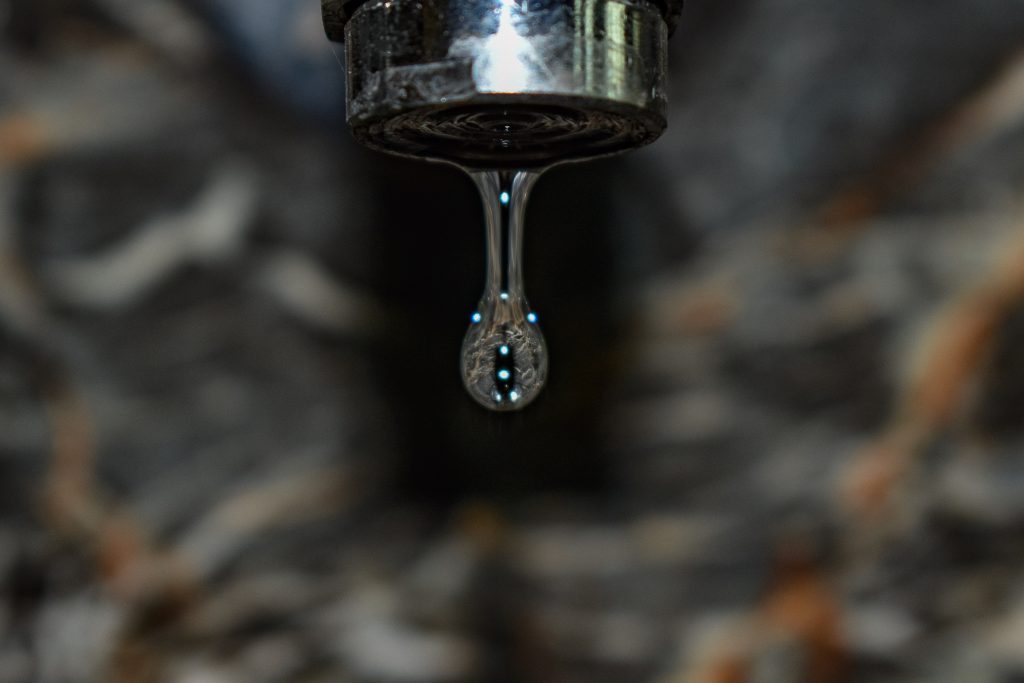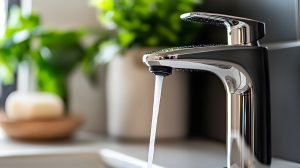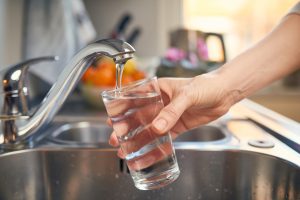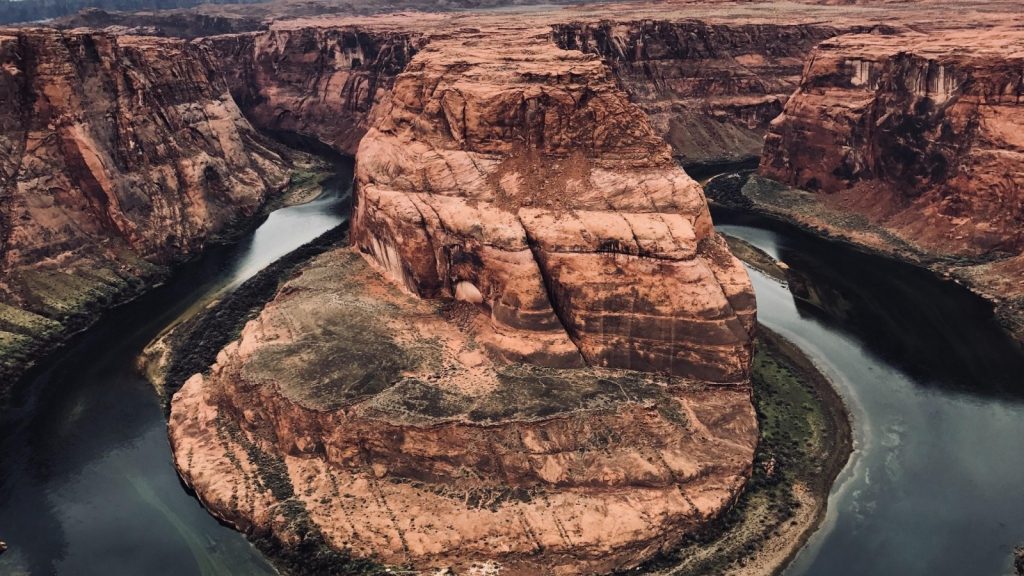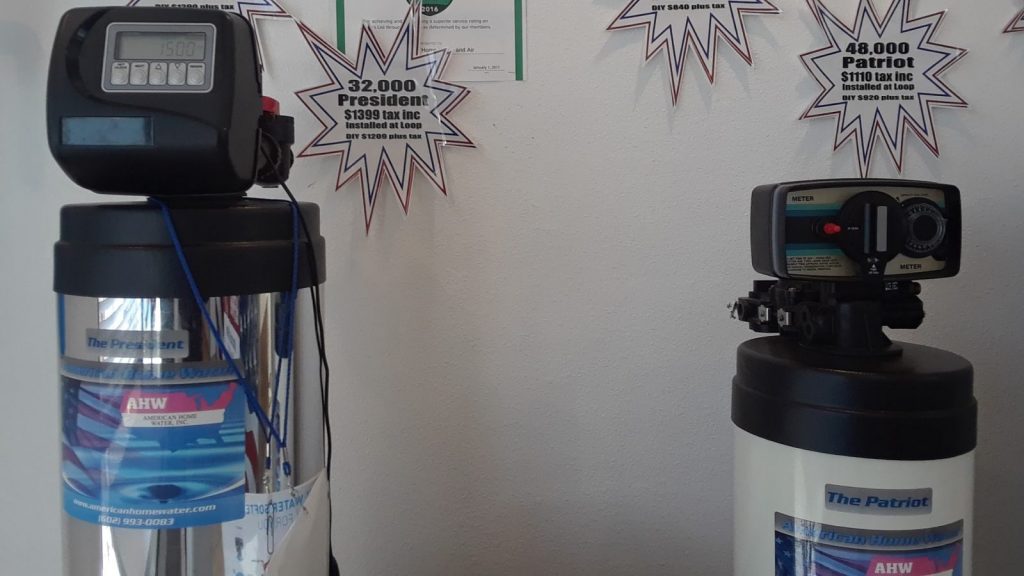Installing a water softener can be tricky, especially if you don’t have any experience with plumbing. In this post, we’ll tell you how to install a water softener the safe and easy way and share some of the common mistakes people make when attempting this for the first time.
Things To Know Before Installing A Water Softener
Installing a water softener can help keep your sinks and plumbing clean.
You don’t need to be an expert plumber to install a water softener. However, you should have a decent understanding of how water softeners work. Knowing how to solder will also prove useful.
You should also be at least somewhat familiar with how water flows through your home. More specifically, you need to know whether your home has a water loop or not.
A Brief Note About Water Loops
A water loop keeps softened water inside your home, directing it towards faucets and appliances like your water heater. It prevents the softened water from making it outside to your garden hose. This is important for a number of reasons, one of which is conserving water.
Some homes come with a pre-installed water loop. This is ideal if you’re installing a water softener by yourself since it means the process will only take a few hours and require minimal expertise.
If your home doesn’t have a pre-installed loop, you’ll have to install new pipes that divert water from the main line when it enters your house. You’ll connect the water softener to this separate line. We’ll provide more instructions for this in an upcoming section.
If your home has a water softener loop, you’ll likely find it in the garage. It comes out of the wall, forming a “U” shape before re-entering the wall a few inches further.
How To Install A Water Softener
If Your Home Has A Loop
After you’ve chosen the correct size water softener for your home, gather the following tools:
- soldering iron kit
- a wrench
- measuring tape
- flexible tubing
- pipe cutters
- teflon tape
- flux
- an elbow fitting
- copper pipe
- any fittings/adapters that came with your water softener
You can find all of these items at your local home hardware store.
Once you’ve got everything you need, here are the steps you need to take.
- Shut your water off.
Locate your home’s main water shut off valve and activate it. If you live in Arizona, this valve is most likely outside your home, near your water meter. Alternatively, you may find it in a utility closet or your garage.
As an added precaution, open one or more of your faucets and let any existing water in your pipes drain out.
- Turn your water heater’s electricity off (if applicable).
If you have an electric water heater, disconnect its power supply by shutting off the appropriate breaker.
- Figure out where to install your water softener.
You have a few different options. The most common choice is to place the softener as close as possible to the point at which water enters your home. Placing it this early in the chain will protect all of your home’s fixtures and appliances from mineral damage.
This is typically where your water loop will be as well.
- Using your pipe cutter, remove the connecting part of your water loop.
You’ll be left with two pipes sticking out of the wall. One of these pipes will funnel untreated water into your softener while the other will funnel treated water out of it and to your appliances.
- Attach an elbow fitting to one end of your now-separated main water line.
You’ll want this elbow fitting to face in whatever direction your water softener’s inflow and outflow valves are. So if the water loop is high up on the wall, the elbow will face downward — and vice versa.
- Use your measuring tape to determine how much pipe is needed to bridge the gap between your elbow fitting and your water softener’s valves.
- Cut the pipe to the appropriate length.
- Prior to attaching the pipe, solder any fittings that are needed to connect the pipe to the bypass valve.
- Connect the pipe.
Your water softener likely came with brass fittings/adaptors. Use those to connect the pipe properly.
- Configure your water softener’s drain hose and brine tank.
Most people use a clamp right at the onset of the water softener’s drain hose. This prevents water from flowing back into the unit. The other end of the drain hose can lead into a utility sink or floor drain.
For instructions on how to set up your brine tank, refer to the owner’s manual. Typically, you’ll just need to connect the brine tank to your main water softener unit with piping and then fill it up with salt.
- Connect your water softener’s overflow tube to its brine tank.
Your water softener’s manual should provide detailed instructions on how to configure this. Look to that documentation for information about the proper height and placement of this overflow tube.
- Switch the bypass valve to the ‘active’ position and reactivate your home’s water supply.
This should flush most of the sediment buildup out of your plumbing.
What’s Next?
Once you’ve completed these steps, you should be able to activate your water softener and set it to ‘backwash.’ Deactivate your bypass valve and refer to your owner’s manual for next steps (what regeneration setting to use, how much salt to add, etc).
If Your Home Doesn’t Have A Loop
If your home doesn’t have a water loop, you’ll need to install one. As mentioned earlier, a loop is essential for your water softener connections if you want to conserve water.
While you technically can install a water softener without a loop, you’ll find it wasteful in the long run. Plus, as the San Francisco Chronicle writes, adding a water softener loop can increase your home’s resale value.
Have your local home water system contractor install this loop in your home. If you live in Arizona, give us a call; we’ve been installing water softeners in Phoenix for decades.
Once you have a loop installed (which can involve some drywall work), follow the steps we outlined in the previous section.
Common Water Softener Installation Mistakes To Watch Out For
As you can probably tell based on the steps mentioned above, installing a water softener requires close attention to detail. If you’ve never attempted a DIY installation before, here are some of the most common mistakes to watch out for.
#1. Relying On Too Many Sources
There are several methods for installing a water softener. What we’ve mentioned above is, in our opinion, the best solution if you’re doing this by yourself.
Whatever you do, choose one guide and stick to it. Jumping from guide to guide while you’re in the process of installing your softener is a recipe for disaster.
#2. Using The Wrong Water Softener Connections/Fittings
Most water softeners come with the exact fittings you need. Using the wrong fittings can lead to leaks and overall poor water softener performance.
#3. Improper Drain Hose Placement
Your drain hose needs to lead somewhere capable of handling the large amount of water that comes out of it. Placing it in such a way that allows it to shift can result in flooding.
#4. Choosing An Inappropriately-Sized Water Softener
If you’re installing a softener by yourself, there’s a good chance you’re also sourcing it alone. It’s imperative that you get a professional’s guidance on this (or at least read our guide, linked above, to sizing a water softener).
An undersized water softener won’t be able to meet your household’s demands. An undersized softener will run less efficiently and cost you more.
Not Sure The DIY Route Is For You?
There are many things to consider when it comes to installing a water softener. If it all sounds like too much for you to worry about, don’t hesitate to call a professional. At American Home Water and Air, we’re happy to help if you need a water softener in the Phoenix area.
Frequently Asked Questions
How long does it take to get soft water after installing a water softener?
You’ll begin receiving soft water through your cold water faucets as soon as installation and a regeneration cycle have completed. It won’t reach your hot water faucets, however, until your hot water heater has been emptied of whatever hard water was there prior to installation. Run a few dishwasher loads to speed this process up.
When installing a water softener do I fill the brine tank with water?
Generally, you’ll fill the brine tank with salt and the regeneration process will take care of the water part. Read your unit’s manual for confirmation of this.
Can I install a water softener myself?
If you’re handy with tools and do the right research, you certainly can install a water softener yourself in less than an hour. You’ll likely need to purchase some additional parts (namely, copper or PVC piping) but it’s very doable.
How much does it cost to install a water softener?
Installation itself typically costs less than $200. Visit our pricing page for more information.
Where does a water softener get installed?
Your water softener should be installed at the loop. This will allow it to soften your entire water supply, which is usually what you want.


